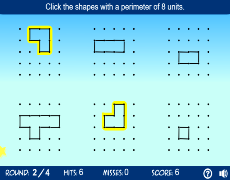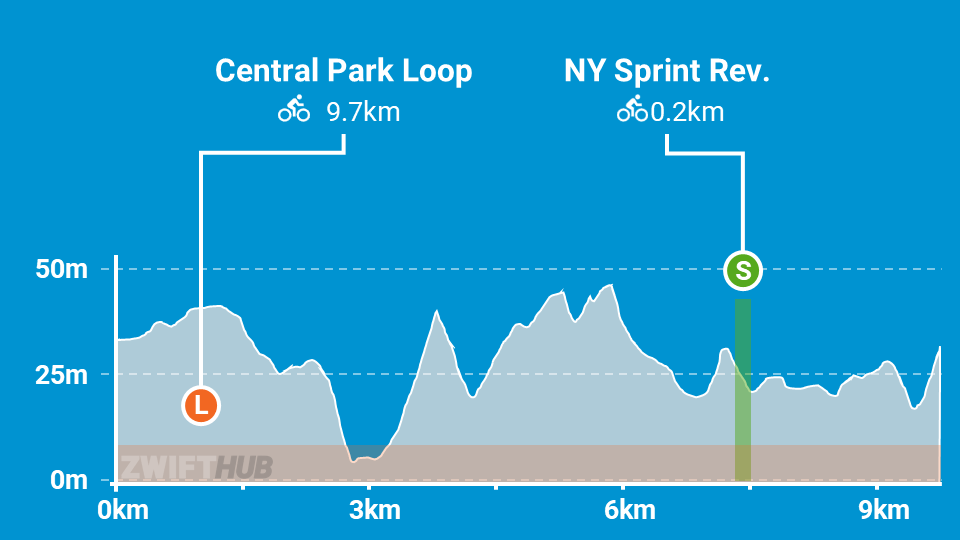Topic how to get the perimeter of a hexagon: Learning how to get the perimeter of a hexagon is a fundamental geometry skill that can be applied in various real-world scenarios. Whether you're working with regular or irregular hexagons, understanding the formulas and methods to calculate the perimeter will help you solve problems efficiently and accurately. This article will guide you through the steps and provide practical examples.
Table of Content
- How to Get the Perimeter of a Hexagon
- Introduction
- Definitions and Basic Concepts
- Formulas for Calculating the Perimeter
- Step-by-Step Examples
- Applications and Practical Uses
- Advanced Topics
- Conclusion
- YOUTUBE: Hướng dẫn chi tiết và dễ hiểu về cách tính chu vi lục giác cho học sinh lớp 7. Hãy xem video để hiểu rõ hơn và nâng cao kỹ năng toán học của bạn.
How to Get the Perimeter of a Hexagon
A hexagon is a six-sided polygon, and its perimeter is the total distance around its edges. The perimeter calculation differs slightly based on whether the hexagon is regular (all sides and angles are equal) or irregular (sides and angles are not equal).
Perimeter of a Regular Hexagon
For a regular hexagon, where all six sides are of equal length, the formula to calculate the perimeter is simple:
Perimeter (P) = 6 * a
where a is the length of one side.
For example, if each side of a regular hexagon is 5 cm, the perimeter is:
\[ P = 6 \times 5 = 30 \text{ cm} \]
Perimeter of an Irregular Hexagon
For an irregular hexagon, where the sides can have different lengths, the perimeter is the sum of the lengths of all six sides. The formula is:
Perimeter (P) = a + b + c + d + e + f
where a, b, c, d, e, and f are the lengths of the six sides.
For example, if the sides of an irregular hexagon are 3 cm, 4 cm, 5 cm, 6 cm, 7 cm, and 8 cm, the perimeter is:
\[ P = 3 + 4 + 5 + 6 + 7 + 8 = 33 \text{ cm} \]
Examples and Applications
Hexagons are prevalent in various real-world applications, including architecture, tiling, and nature (like honeycombs). Knowing how to calculate the perimeter is useful in these contexts, for example, in determining the amount of material needed to border a hexagonal garden or constructing hexagonal tiles.
Summary
- The perimeter of a regular hexagon is calculated by multiplying the length of one side by six.
- The perimeter of an irregular hexagon is the sum of all its side lengths.
Properties of a Regular Hexagon
- All sides and angles are equal.
- Each interior angle is 120 degrees.
- It can be divided into six equilateral triangles.

READ MORE:
Introduction
A hexagon is a six-sided polygon with equal or unequal sides and angles. Calculating the perimeter of a hexagon is a fundamental concept in geometry, which involves summing the lengths of all its sides. This concept is essential in various practical applications such as construction, design, and even in solving mathematical problems. In this section, we will explore the methods to calculate the perimeter of both regular and irregular hexagons step by step, using different given parameters such as side length, coordinates, or area.
-
For a regular hexagon, where all sides are of equal length, the perimeter is calculated using the formula:
\( P = 6 \times s \)
where \( s \) is the length of one side.
-
For an irregular hexagon, the perimeter is the sum of the lengths of all its sides:
\( P = a + b + c + d + e + f \)
where \( a, b, c, d, e, \) and \( f \) are the lengths of the six sides.
-
If the area of the hexagon is given, particularly for a regular hexagon, you can find the side length first and then use it to find the perimeter. The area formula for a regular hexagon is:
\( A = \frac{3\sqrt{3}}{2} s^2 \)
Solve for \( s \) and then use \( P = 6 \times s \) to find the perimeter.
-
For hexagons defined by their vertices' coordinates, use the distance formula to find the length of each side:
\( \overline{XY}=\sqrt{(x_2-x_1)^2 + (y_2-y_1)^2} \)
Sum these distances to find the perimeter.
Definitions and Basic Concepts
A hexagon is a six-sided polygon characterized by its six angles and six vertices. The term "hexagon" is derived from the Greek words "hexa," meaning six, and "gonia," meaning angles. Hexagons can be classified into several types based on the equality of their sides and angles:
- Regular Hexagon: A hexagon with all sides and angles equal. Each interior angle is 120 degrees, and each exterior angle is 60 degrees. It can be divided into six equilateral triangles, and its opposite sides are parallel.
- Irregular Hexagon: A hexagon with unequal sides and angles.
- Convex Hexagon: All interior angles are less than 180 degrees, and all vertices point outward. Convex hexagons can be either regular or irregular.
- Concave Hexagon: At least one interior angle is greater than 180 degrees, and at least one vertex points inward.
The perimeter of a hexagon is the sum of the lengths of its six sides. For a regular hexagon, this can be calculated using the formula:
\[ P = 6 \times a \]
where \( P \) is the perimeter and \( a \) is the length of one side. In the case of an irregular hexagon, the perimeter is found by summing the lengths of all individual sides.
Hexagons are found in various real-life applications such as honeycombs, floor tiles, and geometric constructions. Understanding the properties and perimeter calculations of hexagons is fundamental in geometry.
Formulas for Calculating the Perimeter
The perimeter of a hexagon can be calculated using different methods depending on the type of hexagon and the given parameters. Below are the detailed formulas and steps for calculating the perimeter of regular and irregular hexagons:
Perimeter of a Regular Hexagon
A regular hexagon has all six sides of equal length. The formula to calculate the perimeter (P) is straightforward:
\( P = 6a \)
where \( a \) is the length of one side of the hexagon.
Example: If each side of the hexagon is 5 cm, the perimeter is:
\( P = 6 \times 5 = 30 \) cm
Perimeter of a Hexagon Given the Diameter
When the diameter (d) of a regular hexagon is given, the radius (r) can be found as half of the diameter. The perimeter is then calculated using the formula:
\( P = 6r \)
Since the radius \( r = \frac{d}{2} \), the perimeter formula becomes:
\( P = 6 \times \frac{d}{2} = 3d \)
Example: If the diameter is 10 cm, the perimeter is:
\( P = 3 \times 10 = 30 \) cm
Perimeter of an Irregular Hexagon
For an irregular hexagon, where the lengths of the sides are not equal, the perimeter is the sum of all the side lengths. If the side lengths are \( a, b, c, d, e, \) and \( f \), the formula is:
\( P = a + b + c + d + e + f \)
Example: If the side lengths are 3 cm, 4 cm, 5 cm, 6 cm, 7 cm, and 8 cm, the perimeter is:
\( P = 3 + 4 + 5 + 6 + 7 + 8 = 33 \) cm
Perimeter Using Coordinates
When the coordinates of the vertices of a hexagon are known, the perimeter can be calculated using the distance formula for each side. For vertices with coordinates \((x_1, y_1), (x_2, y_2), ..., (x_6, y_6)\), the distance between two adjacent vertices \((x_i, y_i)\) and \((x_{i+1}, y_{i+1})\) is:
\( \text{Distance} = \sqrt{(x_{i+1} - x_i)^2 + (y_{i+1} - y_i)^2} \)
The perimeter is the sum of these distances for all six sides.
Example: For a hexagon with vertices at coordinates (1,2), (2,3), (4,5), (6,7), (8,9), and (10,11), calculate each distance and sum them up to get the perimeter.
By using these formulas, you can accurately determine the perimeter of any hexagon, whether it is regular or irregular, or given specific dimensions like diameter or coordinates.
Step-by-Step Examples
Understanding how to calculate the perimeter of a hexagon is crucial for solving various geometric problems. Here, we provide detailed, step-by-step examples to help you grasp the concept better.
Example 1: Regular Hexagon
Calculate the perimeter of a regular hexagon where each side is 5 cm.
- Identify the length of one side, \( s = 5 \, \text{cm} \).
- Use the formula for the perimeter of a regular hexagon: \( P = 6s \).
- Substitute the value of \( s \): \( P = 6 \times 5 = 30 \, \text{cm} \).
- The perimeter of the hexagon is 30 cm.
Example 2: Irregular Hexagon
Calculate the perimeter of an irregular hexagon with side lengths 7 cm, 8 cm, 6 cm, 9 cm, 5 cm, and 10 cm.
- List the lengths of all sides: \( 7 \, \text{cm}, 8 \, \text{cm}, 6 \, \text{cm}, 9 \, \text{cm}, 5 \, \text{cm}, 10 \, \text{cm} \).
- Add all the side lengths together: \( 7 + 8 + 6 + 9 + 5 + 10 \).
- Calculate the sum: \( 7 + 8 + 6 + 9 + 5 + 10 = 45 \, \text{cm} \).
- The perimeter of the hexagon is 45 cm.
Example 3: Hexagon Inscribed in a Circle
Calculate the perimeter of a regular hexagon inscribed in a circle with a radius of 4 units.
- Identify the radius of the circle, which is also the side length of the hexagon, \( s = 4 \, \text{units} \).
- Use the formula for the perimeter of a regular hexagon: \( P = 6s \).
- Substitute the value of \( s \): \( P = 6 \times 4 = 24 \, \text{units} \).
- The perimeter of the hexagon is 24 units.
Example 4: Hexagon with Given Vertices
Calculate the perimeter of an irregular hexagon with vertices at coordinates (1, 2), (1, 5), (3, 5), (5, 3), (5, 1), and (2, 1).
- Use the distance formula \( \overline{XY}=\sqrt{(x_2-x_1)^2 + (y_2-y_1)^2} \) to find the length of each side.
- \( \overline{AB} = \sqrt{(1-1)^2 + (5-2)^2} = \sqrt{0 + 9} = 3 \, \text{units} \)
- \( \overline{BC} = \sqrt{(3-1)^2 + (5-5)^2} = \sqrt{4 + 0} = 2 \, \text{units} \)
- \( \overline{CD} = \sqrt{(5-3)^2 + (3-5)^2} = \sqrt{4 + 4} = \sqrt{8} = 2\sqrt{2} \, \text{units} \)
- \( \overline{DE} = \sqrt{(5-5)^2 + (1-3)^2} = \sqrt{0 + 4} = 2 \, \text{units} \)
- \( \overline{EF} = \sqrt{(2-5)^2 + (1-1)^2} = \sqrt{9 + 0} = 3 \, \text{units} \)
- \( \overline{FA} = \sqrt{(1-2)^2 + (2-1)^2} = \sqrt{1 + 1} = \sqrt{2} \, \text{units} \)
- Add the lengths of all sides together: \( 3 + 2 + 2\sqrt{2} + 2 + 3 + \sqrt{2} = 10 + 3\sqrt{2} \).
- The perimeter of the hexagon is approximately 14.24 units.

Applications and Practical Uses
Hexagons are found in various applications and practical uses due to their unique geometric properties. Below are some examples and explanations of where hexagons are utilized:
-
Tiling and Flooring:
Hexagonal tiles are commonly used in flooring and tiling because their shape allows them to fit together without gaps, providing a seamless and efficient covering. This property is beneficial in reducing material waste and enhancing aesthetic appeal.
-
Nature:
- Beehives: Honeycomb structures in beehives are made up of hexagonal cells. This shape is optimal for maximizing space and minimizing the amount of wax needed for construction.
- Snowflakes: Snowflakes naturally form hexagonal structures due to the molecular arrangement of water as it crystallizes.
- Insect Eyes: Many insects, such as dragonflies, have compound eyes made up of hexagonal facets, providing a wide field of vision and aiding in prey capture.
-
Chemistry:
Hexagonal structures are prevalent in chemistry, particularly in organic compounds like benzene, which consists of a hexagonal ring of carbon atoms. This structure is crucial for the stability and reactivity of many organic molecules.
-
Engineering and Architecture:
Hexagons are used in engineering and architecture for designing efficient and strong structures. Their geometric properties allow for the distribution of stress evenly, making them ideal for constructing resilient frameworks.
-
Astronomy:
On a larger scale, hexagonal patterns have been observed in nature, such as the hexagonal cloud pattern at Saturn's north pole, providing insights into atmospheric dynamics.
These examples demonstrate the versatility and efficiency of hexagonal shapes in both natural and human-made structures, highlighting their significance in various fields and everyday life.
Advanced Topics
When studying hexagons, particularly in advanced mathematical contexts, several interesting and complex topics arise. Below, we delve into some of these advanced topics, providing detailed explanations and formulas.
Inscribed and Circumscribed Circles
For a regular hexagon, both inscribed (incircle) and circumscribed (circumcircle) circles can be defined. The radius of the incircle (r) and the circumcircle (R) are related to the side length (s) of the hexagon as follows:
- Incircle radius (r): \( r = \frac{\sqrt{3}}{2} s \)
- Circumcircle radius (R): \( R = s \)
Diagonals of a Hexagon
A regular hexagon has three different sets of diagonals:
- Short Diagonals: These connect vertices that are two sides apart. Their length is equal to the side length of the hexagon, \( d_1 = s \).
- Medium Diagonals: These connect vertices that are three sides apart. Their length is given by \( d_2 = \sqrt{3} s \).
- Long Diagonals: These connect vertices that are opposite each other, effectively spanning the diameter of the circumcircle, \( d_3 = 2s \).
Hexagonal Tessellations
Hexagons are known for their ability to tessellate, meaning they can cover a plane without any gaps. This property is particularly useful in various fields such as tiling, game design, and urban planning. The efficiency of hexagonal tessellations comes from their minimal perimeter for a given area, which translates to material savings.
Complex Hexagonal Structures
In advanced geometry and material science, complex hexagonal structures are studied for their unique properties. Examples include carbon nanotubes, which are composed of hexagonally arranged carbon atoms, and the hexagonal close-packed (HCP) crystal structure found in metals.
Coordinate Geometry of Hexagons
In coordinate geometry, a regular hexagon can be easily plotted using trigonometric functions. If the center of the hexagon is at the origin (0, 0), the vertices can be represented using polar coordinates or complex numbers, providing a foundation for various geometric transformations and analyses.
Applications in Physics and Engineering
Hexagonal patterns appear in various physical systems due to their optimal packing properties. For instance, in crystallography, the hexagonal lattice structure is critical in understanding the properties of materials. Similarly, in engineering, hexagonal shapes are used in the design of efficient load-bearing structures.
Conclusion
Understanding how to calculate the perimeter of a hexagon is a fundamental mathematical skill with wide-ranging applications. By now, you should be comfortable with the concepts and formulas needed for both regular and irregular hexagons. Here's a quick recap to solidify your understanding:
-
Regular Hexagon: The perimeter can be easily calculated by multiplying the length of one side by six. If \( s \) is the side length, then the perimeter \( P \) is:
\( P = 6s \)
-
Irregular Hexagon: The perimeter is the sum of the lengths of all six sides. If the sides are denoted as \( a, b, c, d, e, f \), then the perimeter \( P \) is:
\( P = a + b + c + d + e + f \)
-
Hexagon Inscribed in a Circle: For a regular hexagon inscribed in a circle with radius \( R \), the side length can be determined using the radius, and hence the perimeter can be calculated as:
\( s = R \)
\( P = 6R \)
Additionally, you can apply advanced methods such as using the distance formula for irregular hexagons or incorporating the known apothem to find the perimeter in various scenarios. These techniques are particularly useful in fields like construction, architecture, and design, where precise measurements are crucial.
We hope this guide has provided you with a thorough understanding of the different methods to calculate the perimeter of hexagons. Armed with this knowledge, you can confidently approach problems involving hexagonal shapes in both academic and practical settings.
Thank you for reading, and we encourage you to continue exploring the fascinating world of geometry!
Hướng dẫn chi tiết và dễ hiểu về cách tính chu vi lục giác cho học sinh lớp 7. Hãy xem video để hiểu rõ hơn và nâng cao kỹ năng toán học của bạn.
Cách Tính Chu Vi Lục Giác Lớp 7
READ MORE:
Hướng dẫn chi tiết về cách tính chu vi lục giác đều. Xem video để nắm vững phương pháp và cải thiện kỹ năng giải toán của bạn.
Chu Vi Lục Giác Đều: Bài Toán Trong Ngày















